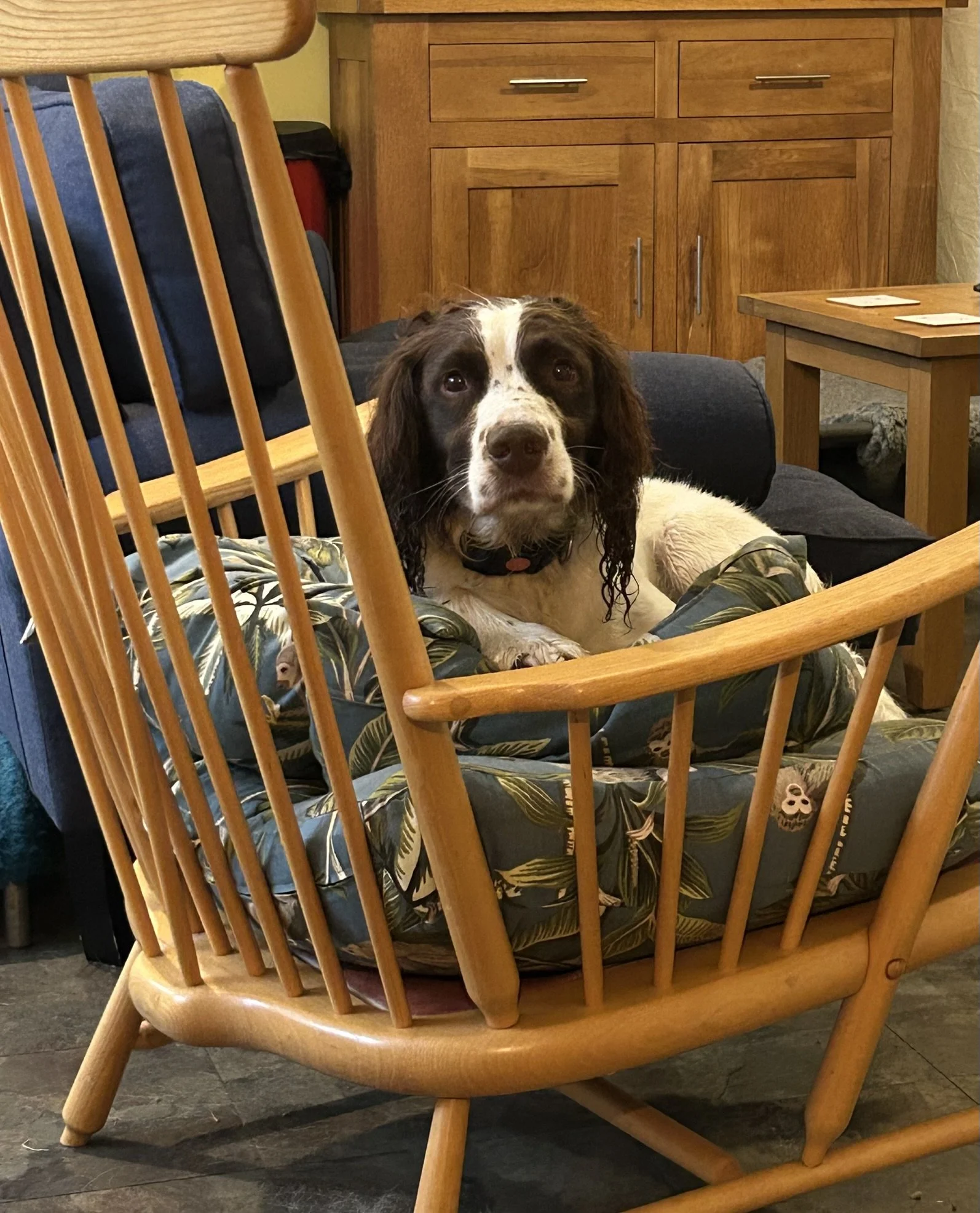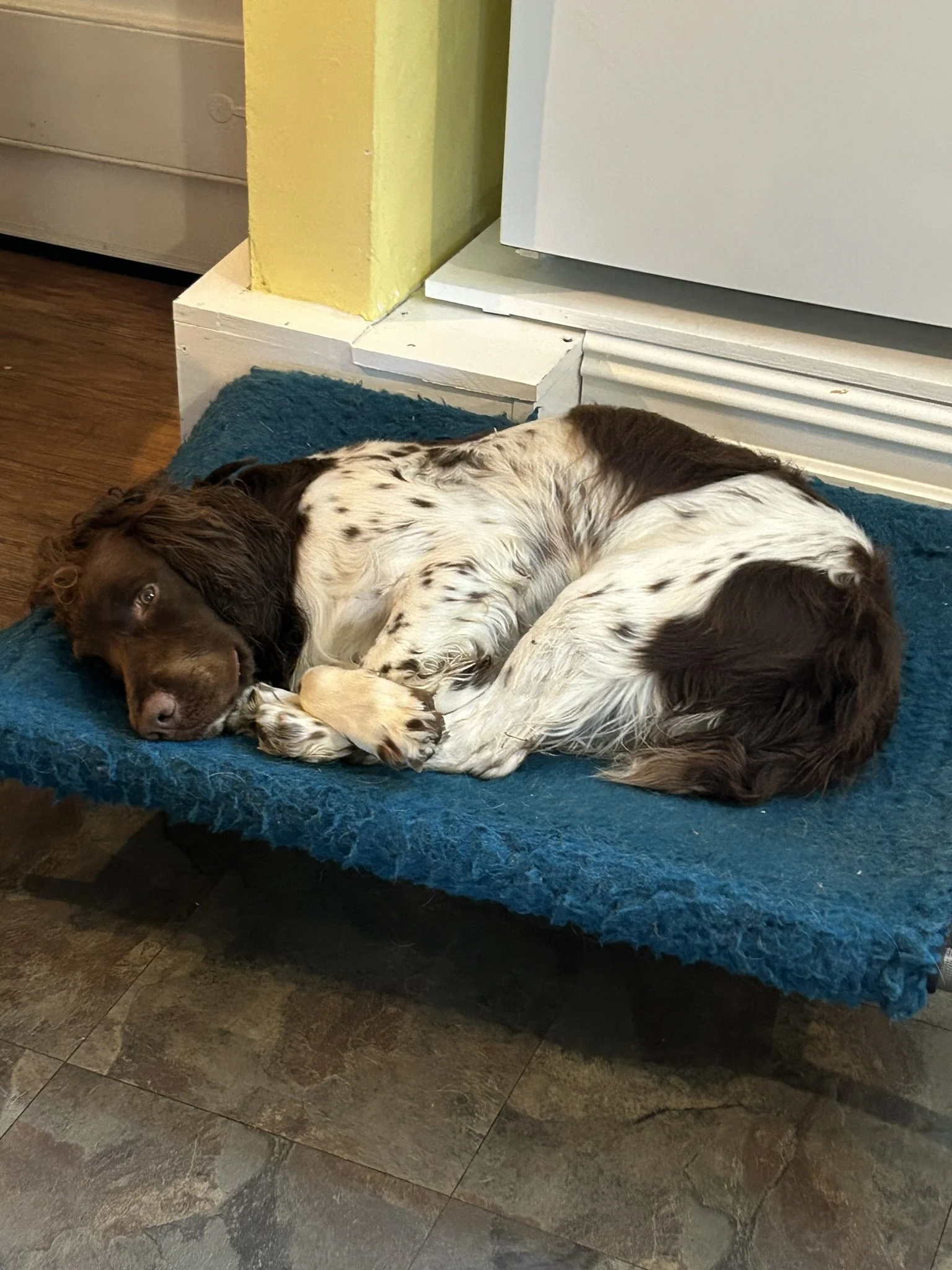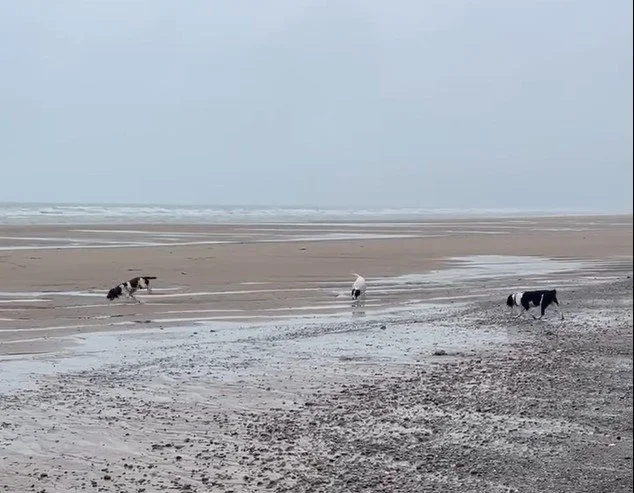Dog-Friendly Holidays: Everything You Need To Know Before You Go
This blog will help you take your dog, or dogs, on holiday, and make it a great experience for all of you!
When you take your dog on holiday, remember, this is not going to be your usual holiday with your dog tagging along. Chances are you will shape the entire holiday around your dog! If your dog is happy, you will be too!
Having recently travelled to the Lake District with my three springer spaniels, I can say that preparation is key.
You will make your life so much easier and your holiday more fun if you prepare everything in advance, from where you are going to stay, to the route you are going to take, including rest stops, and what you are going to do when you get there.
Deciding on a Location for your Dog-Friendly Holiday.
Consider the kind of things you like doing with your dog and whether you want to be in a town or village, or more rural, or if you prefer the beach.
Ask other dog owners for recommendations of where they have been on holiday with their dog.
Think about whether these areas would suit you and your dog(s). What works well for one family and their dog may not suit you at all.
The Journey: Dog-Friendly Travel
Car travel is the most convenient, as you will have luggage and equipment to take with you.
If you travel by public transport, you will be more restricted with what you can take, and you will also have the dog to keep an eye on.
Car Travel: Tips for a Smooth Ride for your Dog
Make sure your dog is safe in the car, you need a suitable crate, pet carrier, or harness and seat belt to comply with rule 57 of the Highway Code. If you would like my handout about safe travel in the car, please contact us.
It is important that your dog is happy travelling in the car before you decide on your destination.
Consider the length of the journey and how long your dog is comfortable travelling for. This factor will influence your choice of destination.
If your dog is not happy travelling in the car, this is something you can work on before your trip. If you are not sure how to do this, we can help, please contact us.
In the summer months, when the roads tend to be busier, and the weather warmer, travelling early in the morning can make the journey easier. Being stuck in a traffic jam in the heat of a summer’s day with a dog can be worrying.
When we travelled to the Lakes earlier this year, we got up at 5.30am, exercised the dogs, and set off. After driving for a couple of hours, we stopped for a leg stretch and gave the dogs some water and a small breakfast before setting off again. We stopped every 2-3 hours for the dogs to stretch their legs, toilet, and have a drink of water.
It is so much easier if you pack the car so that everything you need for these stops is easily accessible, its no good having the thing you need, somewhere in the car if you cannot find it!
If the journey is too long to complete in a day, you could stop en route for a day or two to break the journey.
Travelling on Public Transport with your Dog: Preparing for a Pleasant Journey
If you travel by public transport, plan the journey well in advance.
Consider the type of transport you will need to take and whether you will need to change service.
Make sure your dog can cope with the experience, whether they are able to go up and down steps safely, whether they will enter a lift, and whether they will settle on the bus or train.
You can prepare your dog beforehand, by visiting a local station, practising going up and down the steps, going on to the platform, and familiarising them with the station noises. If you will be taking a bus, you can start with short bus journeys.
If you have a small dog, you may prefer to have them in a pet carrier, although this will be something else for you to carry.
Aim to travel at quieter times when services are less crowded. The last thing you want is to be in the middle of a crowd with a dog that is too frightened to get in the lift and or threatens to pull you down the steps!
If you need support with travelling on public transport, please contact us.
Dog-Friendly Accommodation: What you need to consider
When you are looking for places to stay, you will find many online sites that allow you to filter for dog friendly accommodation.
Read the detail, some places will allow you to take dogs but it does not mean they are dog friendly.
Think about what you need for a comfortable stay. You want to make the holiday stress free and enjoyable for you as well as the dogs.
Recently, a client who had booked a dog friendly cottage found out that dogs were not allowed upstairs, or on the furniture, and had to be on lead in the garden. This meant that although the place was described as ‘dog friendly’, it did not meet their needs, and they decided to leave their dog at home with a sitter.
There are some Facebook groups specifically for providers of dog friendly accommodation. The properties in these groups are usually owned by dog lovers and they cater to the needs of dogs and their families more than the general sites.
Top Facilities to make your Holiday Dog-Friendly
For me, an enclosed secure garden is essential. I want to be able to let my dogs out at night and first thing in the morning without scrambling to get dressed and get my boots on!
The property we stayed in in the Lakes had a secure field next to the garden, with what was described as ‘secure fencing’. It wasn’t really high enough for my dogs, they could have jumped out. Thankfully, despite lots of checking of the fencing (by them) they didn’t try jumping over, but I had to keep an eye on them just in case.
In future I will check the height and type of the fence before booking and I would recommend you do the same. Could an athletic dog jump the fence, or a small dog fit through a gap? These details are important; you do not want to lose your dog while you are on holiday. If you cannot tell from the description, send a message and ask.
The access from the cottage to the field was through a paved garden (not secure) and down some very steep, slippery steps. I took the dogs to the field on lead initially, once they knew where they were going, the leads were no longer necessary. They were accompanied outside the property at all times, and they all have good recall.
Consider whether the property allows dogs upstairs and, on the beds or furniture. If your dog is used to sleeping upstairs or in your bed, this may not be allowed, and your dog may not settle downstairs in a strange place.
My dogs sleep downstairs, and there was a gate we could close at night to stop them from climbing the stairs. This was perfect for us but would not suit everyone.
Consider any other facilities, for example, if you feed raw, you will need a freezer to store food for the duration of your stay unless you get raw food delivered? This is important, you don’t want to be forced to change food when you are away as this may upset your dog.
Think about whether you need a washing machine, dryer and dog washing facilities.
Some accommodations provide crates, dog beds, blankets and towels which can be a great help if you are travelling on public transport or short on space. However, they will only be of use of your dog will be happy to settle in a bed or crate that isn’t their own.
Days Out with Your Dog
The Beach
If you are planning to take your dog to the beach you need to check the rules which apply to the local beaches and make sure that dogs are permitted during the period, you will be there.
I also suggest checking the tide times to make sure there will be somewhere for you to walk safely when you will be visit. My experience is that some information you find online is not accurate and does reflect seasonal variations.
Check out this link for dog friendly beaches in the UK.
Consider whether it’s safe to give your dog complete freedom on the beach or whether you need to keep them on a lead?
Hiking with Your Dog
If you are planning to do lots of walking again consider the area and whether there will be livestock there.
Recently, I have seen posts in local Facebook groups asking for advice on where to walk dogs safely in rural areas where there are no sheep. This is a great idea, and if you can access this local knowledge, it will help you plan your walks.
You may find your vision of wonderful off lead hiking may turn out to be different if the fields are full of livestock and you must keep your dog on a lead.
Keep in mind, your dog’s usual activity level, and try to keep to a similar level while you are away. An increase in exercise can put them at risk of injury which is the last thing you want when you are on holiday.
Eating out with your dog
If you are planning to eat out in in a pub or cafe consider where to go and how busy the place will be and whether your dog will be up to settling in the environment. Some dogs might find it easier to settle in an outside space and you may be less concerned about them disturbing other diners than inside.
If you are planning your holiday in advance, you could do some café training before you go so you can really enjoy the experience when you are away.
Dog-Friendly Attractions
Many attractions welcome dogs, but only you will know whether the experience on offer will work for your dog and whether you will be able to enjoy the outing.
I would have loved to visit a steam railway when we were in the Lake District but taking my three high drive springer spaniels on a steam train would have been difficult. If you have one dog it would have been a fun thing to do,
Some places will allow you to go out and leave your dog in the accommodation while you go out without them. This can be really useful. You need to be sure they are happy to be left and will not be distressed or destructive.
I hope you have enjoyed reading this blog about taking your dog on holiday and some of my ideas will help you when you are planning your next adventure. I wish you safe and happy travels.
For more perspectives about travelling with your dog, check out this blog post from K9 and Kats.




